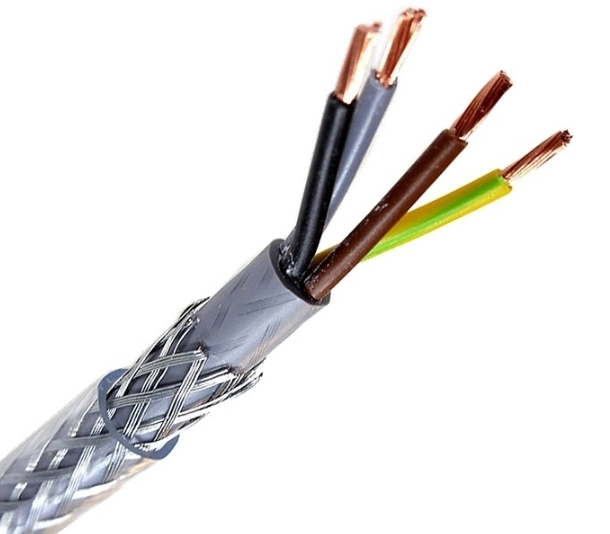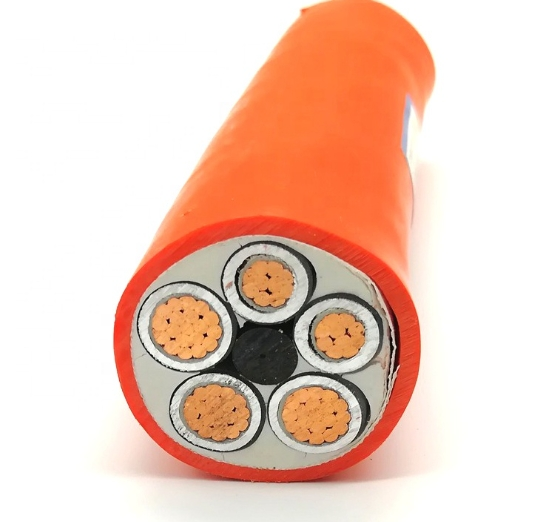Power cable emerges as fundamental components, pivotal to the seamless transmission and distribution of electrical energy. These cables, indispensable across a spectrum of applications, form the backbone of both residential and industrial power systems. An in-depth comprehension of the construction elements of power cables, encompassing conductor materials, insulation types, and protective layering, is imperative. This knowledge is crucial for understanding the effective use of key components, AC power cable types, and the differences between power and control cables, all of which are integral to the reliability and safety of electrical systems. Let’s commence with the initial step.
Defining Power Cables:
Power cables, often referred to as electrical cables, consist of two or more electrical conductors encased in an over-sheath. These cables are instrumental in the transmission of electrical power, frequently connecting to wall sockets or extension cords. Distinct from signal transmission cables, power cables are engineered to handle higher current levels, making them essential in a plethora of settings, from electric utilities to sophisticated industrial machines.Do you want to understand the composition of the power cable?Continue to accompany me on this journey by following my updates.
Power Cable Components

- Conductor: Serving as the cable’s core, conductors are typically fashioned from copper or aluminum. They can be a solitary wire or a cluster of wires twisted together. The conductor’s size and composition are tailored to its intended application.
- Insulation: This critical layer ensconces the conductor, preventing undesirable contact with other conductors or conductive surfaces, thus averting short circuits and electric shocks. Common materials employed include PVC and XLPE (cross-linked polyethylene).
- Cable Filling: Employed to counteract moisture ingress, which can be detrimental to cable performance, particularly in outdoor or underground installations.
- Bedding: In multi-core cables, bedding is applied over the insulated cores, providing a protective layer and maintaining the integrity of the cores. Materials like PVC or rubber are commonly used.
- Armouring: Present in certain cable types, especially those installed in environments requiring mechanical protection (such as underground or industrial areas), armouring is typically made of steel wires or tapes, offering resilience against physical stress and rodent damage.
- Outer Sheath: The outermost protective layer of the cable, the sheath safeguards against mechanical, moisture, and chemical challenges. It is often crafted from materials like PVC, PE (polyethylene), or halogen-free compounds and frequently carries vital information about the cable.
Diverse Types of Power Cables and Their Roles
Each power cable variant is tailored to meet specific requirements of electrical conductivity, environmental resilience, mechanical robustness, and safety. Selecting the appropriate cable type is critical for the efficient, safe, and reliable functioning of electrical systems. Here are the key types:
Uses:Predominantly in residential and commercial buildings for wiring and lighting systems.
Characteristics:Rated up to 1 kV, designed for low voltage environments.
Uses:In industrial and utility applications, including power distribution networks.
Characteristics:Ranging from 1 kV to 33 kV, these cables are built to handle higher power demands with robust insulation.
Uses:Crucial for long-distance electricity transmission from power plants to substations.
Characteristics:Rated above 33 kV, featuring advanced insulation and often oil or gas impregnation for high voltage stresses.
- Direct Buried Cables:
Uses:Tailored for underground installations without additional coverage.
Characteristics:Robust, with heavy-duty sheathing and armor for protection against environmental stresses.
Uses:In overhead power lines for power distribution and transmission.
Characteristics:Engineered to endure environmental factors like UV radiation and temperature variations.
Uses:Widely in industrial automation and control panels.
Characteristics:Designed for low power signal transmission with shielding against electromagnetic interference.
Uses:Ideal for environments demanding mechanical protection.
Characteristics:Incorporate a protective metal armor, commonly steel, for additional mechanical defense.
- Fire-Resistant Cables:
Uses:In areas requiring maintained circuit integrity in fire situations, like emergency systems.
Characteristics:Built to withstand high temperatures and maintain functionality during fires.
Uses:In applications necessitating flexibility, such as moving machinery.
Characteristics:Composed of finely stranded conductors for ease of movement.

Power cable and control cable difference
Power cables and control cables serve distinct functions in electrical systems.the distinction between power cables and control cables is critical, as they serve vastly different purposes and are engineered with specific applications in mind.
Power Cables: The Backbone of Electrical Transmission
Power cables are the heavy lifters in the world of electricity transmission. Designed primarily for the distribution and transmission of electrical power, they are an integral part of the infrastructure that feeds electrical grids, powers buildings, and supports various other high-power applications. These cables are characterized by their robust construction, which includes larger conductors and thicker insulation, tailored to manage high voltage and substantial current levels. Their primary role is to handle a significant electrical load, making them indispensable for powering appliances, heavy machinery, and lighting systems in both industrial and residential settings.
Control Cables: Precision Instruments for Data Transmission

Control cables, in contrast, play a pivotal role in the instrumentation and control aspects of electrical systems. These cables are engineered to carry signals or commands within the control systems of a myriad of equipment types, from simple machinery to complex industrial setups. They are the lifelines of systems where data transmission is crucial for operational control and precision. Unlike power cables, control cables are not designed for raw power delivery. Instead, they focus on reliability and accuracy, featuring smaller conductors and lighter insulation. Their design emphasizes flexibility and ease of installation, particularly in spaces where maneuverability is key.
Divergent Electrical Characteristics and Construction
While power cables must endure high voltage and are constructed to minimize power losses over extended distances, control cables concentrate on maintaining signal integrity and preventing signal interference. This often involves incorporating shielding to ward off electromagnetic interference (EMI), which can be detrimental to control signals. The choice of materials and construction methods for each type of cable reflects their distinct functional requirements.
Conclusion:
Power cables are fundamental to our modern, electrified existence. They not only illuminate our homes and power our industries but also evolve with technological advancements. Understanding their types, construction, and difference is crucial for their safe and efficient utilization. As we stride towards a more electrified future, the evolution of power cables continues, offering more sustainable and efficient solutions to cater to the burgeoning demands of world.As a professional electrical cable manufacturer, ZW Cable has the responsibility and obligation to contribute to the global construction industry.





